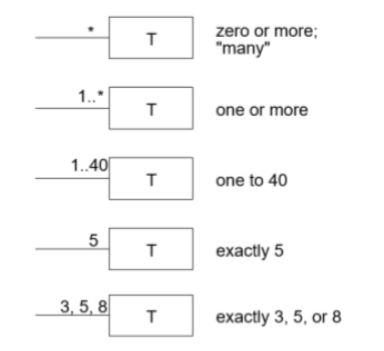Analyze the problem to identify the objects, classes and its attributes.
Object Oriented Design
Object-oriented analysis is a method of analysis that examines requirements from the perspective of the classes and objects found in the vocabulary of the problem domain.
Steps in examining requirements are:
- Use Case Document preparation.
- Object Model preparation.
Use Case Document
A use case is a narrative description of a goal-oriented interaction between the system under development and an external agent.
A use case is sort of like a dialog script written for two actors. Use cases capture requirements in the form of interactions with an end user.
Use Cases Do Not Require Technical Knowledge
Main sections of a use case document are:
Use Case Name - Use Case naming is usually done based on an organization’s data standards.
Description
Actors - The actors in the use case are the people or elements who are involved in the process
- Primary Actor: person who is responsible for the event for which the Use Case exist
- Secondary Actor: person or group of people that is needed to complete the process successfully
Trigger: A trigger simply defines the exact action which results in the Use Case
- External events are those started by an actor, either a person or another system requesting information.
- Temporal events are those that are triggered or started by time.
Preconditions: The conditions that need to be met to ensure that the use case can be fulfilled.
Flow
- Types of flow
- Basic Flow: best case scenario of what should happen in the use case if all the conditions are met.
- Alternates: Are there any alternate routes that the action can be done?
- Exceptions: This dictates what happens when a failure occurs in the flow.
- Just one sentence writing style:
- a sentence in the present tense,
- with an active verb in the active voice,
- describing an actor successfully achieving a goal that moves the process forward.
- Types of flow
Level: classify the use case with a level in order to explain the urgency which it needs to be dealt with:
- High Level Summary(white/cloud) -Enterprise level
- Summary of goals (Kite) - business unit or department level
- User Goal (Blue/ Sea level) - usually written for a business activity and each person should be able to do one blue level activity in anywhere from 2 to 20 minutes.
- Sub-Function (Indigo/ fish) - shows lots of detail
- Low Level (Black/calm) - most detailed use cases
Post condition: It is the state of the system after the use case has finished, including output people have received, transmissions to other systems, and data that have been created or updated.
Stakeholders: The people who are going to be affected by the use case.
Domain Model
Domain modeling is a technique used to understand the project problem description and to translate the requirements of that project into software components of a solution.
A domain model contains conceptual classes, associations between conceptual classes, and attributes of a conceptual class.
"Informally, a conceptual class is an idea, thing, or object".
Domain model is Is an Object and it has
identity,
state, and
behaviour.
An object can be
related to other objects and
complex (with sub-objects).
Identifying Objects
Modify or reuse an existing model.
Use a conceptual class category list.
Identify noun phrases.
Making a domain model
Identify conceptual classes
Conceptual class can be identified by studying the use case looking for relevant noun phrases
Some heuristics for identification are:
terms that developers or users need to clarify in order to understand the use case,
recurring nouns (higher frequency),
real world entities that the system needs to track,
real world activities
data sources or sinks
Identify attributes (properties) to the classes
An attribute is a logical data (property) of an object (e.g., my eyes are hazel).
Most attributes can be represented by simple data types
Some heuristics for identifying attributes:
an attribute is part of the state of an object (a car's speed is 100 km/h, weight of a work item)
attributes are required by the use case (i.e., ignore irrelevant attributes).
Draw the classes with only attribute
Add any associations between classes
Some heuristics for identifying associations are:
examine verb phrases,
ensure that the roles and association names are clear,
only add an association if it improves the understanding of the domain,
wait until the list of associations are stable before considering the multiplicity
- Multiplicity defines how many instances of a class A can be associated with one instance of a class B.

